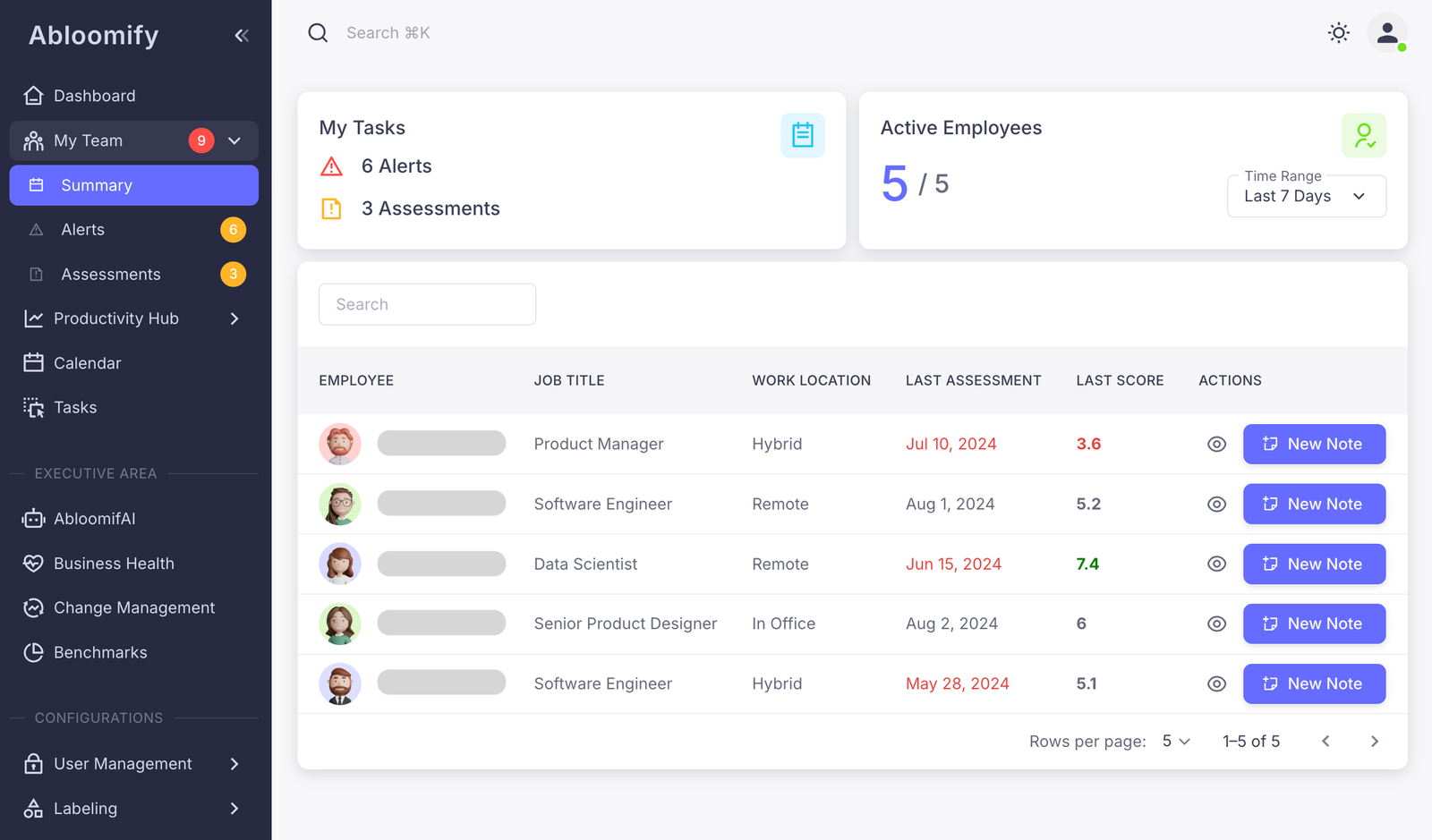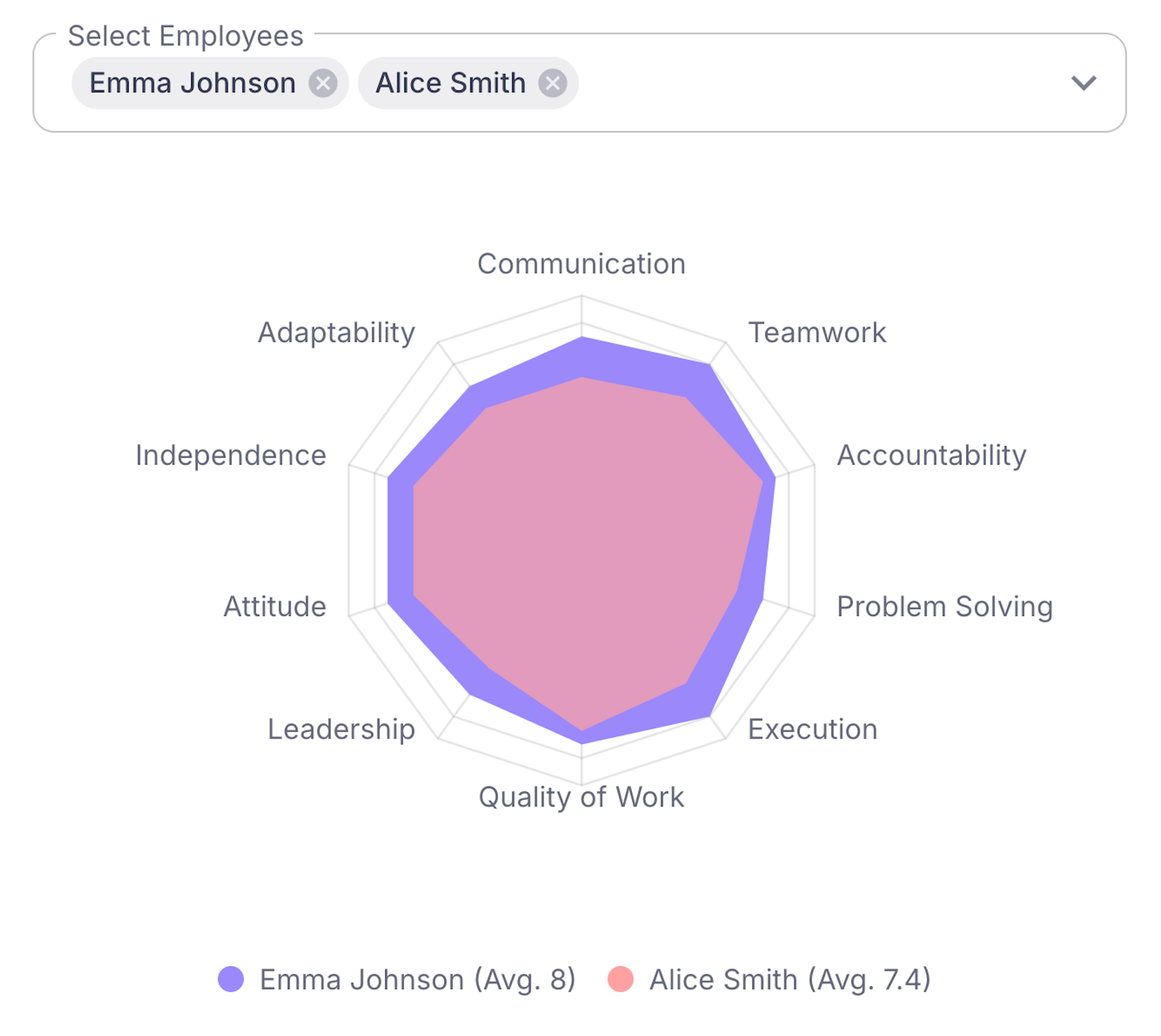Predictive HR analytics holds the key to unlocking exponential growth for tech companies. By selecting the right tools, leaders can transform team dynamics, streamline operations, and make informed decisions. We’ll delve into how to choose the ideal predictive HR analytics tools to boost organizational efficiency and drive sustainable success.
Understanding Predictive HR Analytics
Predictive HR analytics is reshaping workforce management in tech companies. It builds on traditional HR analytics by not only analyzing past behaviors but also forecasting future outcomes. This approach involves using advanced statistical techniques and machine learning algorithms to identify patterns and predict trends.
Here’s how predictive HR analytics stands out:
- Data-driven insights: While traditional HR analytics focuses on reporting what happened, predictive analytics forecasts what is likely to happen and why.
- Enhanced decision-making: With predictive data, tech leaders can allocate resources more effectively, addressing issues before they arise.
- Proactive strategies: By anticipating workforce needs and movements, tech firms can be a step ahead in hiring, training, and employee engagement.
Tech companies are leveraging this science to gain an edge in understanding workforce dynamics:
- Employee retention: Predictive HR analytics can signal at-risk employees, enabling preemptive retention strategies.
- Skill development: By pinpointing future skill gaps, firms can tailor training programs to match market demands.
- Change management: Anticipating reactions to organizational changes allows for smoother transitions and enhanced adaptability.
These capabilities make predictive HR analytics not just a luxury but a necessity in tech’s competitive landscape. For a deeper dive into optimizing workforce productivity through analytics, explore Harnessing AI to Optimize Workforce Performance. Together, these tools can position any tech company to proactively steer workforce strategy and achieve sustainable growth.
The Role of Predictive Analytics in Tech
Tech companies face unique HR challenges where predictive analytics can make a difference. The fast evolution and growth of this industry demand innovative solutions for continuous change. Here’s how predictive HR analytics can address specific needs:
1. Employee Retention: Tech firms often grapple with high turnover rates. Predictive analytics helps identify signs of employee disengagement or risk of attrition. By analyzing patterns like lower productivity or frequent absenteeism, companies can proactively address issues, reducing costly turnovers.
2. Skill Development: With technology evolving rapidly, skill obsolescence is a looming concern. Predictive tools can forecast future skill requirements based on industry trends, enabling tailored training programs. Aligning employee capabilities with future demands adds value and fosters growth.
3. Change Management: Implementing new technologies or restructuring operations can face resistance. Predictive HR analytics can assess organizational readiness for change. By analyzing workforce adaptability and identifying potential bottlenecks, tech companies can effectively manage transitions and enhance overall acceptance.
4. Boosting Productivity: Understanding what drives or hinders productivity is essential in tech environments. Analytics can reveal insights into optimal work patterns, helping create customized work models to maximize output. Explore our guide on AI-driven productivity transformation for further insights.
By leveraging predictive HR analytics, tech companies can mitigate challenges and anticipate future needs. This strategic approach not only enhances operational efficiency but also strengthens the competitive edge in a rapidly shifting landscape.
Key Features to Look For
When selecting predictive HR analytics solutions for tech, certain critical features must be top of mind. First, data integration capabilities are crucial. Tools should effortlessly integrate with existing systems like HRIS, payroll, and other enterprise software. Seamless data flow across systems ensures real-time insights and reduces manual errors.
Next, consider the role of AI-driven insights. An effective predictive analytics tool should leverage machine learning algorithms to uncover patterns and predict future workforce trends. This not only helps in making informed decisions but also proactively addresses issues like attrition and skill gaps.
Privacy remains a pressing concern in the era of data-driven decision-making. Opt for solutions that provide robust encryption and access controls. With increasing regulatory scrutiny on data handling, such measures are non-negotiable. Look for compliance with standards like GDPR or CCPA, ensuring your team respects personal privacy and adheres to legal mandates.
A holistic solution should offer a user-friendly interface. Complex dashboards can hinder decision-making. Aim for systems that present data visually and intuitively. Interactivity and customization ensure executives and HR leaders can tailor insights to their specific needs.
Lastly, scalability is essential. As your tech organization evolves, so should your analytics software. Ensure the solution can grow with increased data volumes and incorporate new functionalities as required. Selecting a robust, adaptive tool places tech leaders in a proactive position, allowing them to leverage analytics for growth. To delve deeper, check out insights on leading HR analytics platforms for tech companies.
How Predictive HR Analytics Enhances Decision-Making
Predictive HR analytics elevates decision-making for tech leaders by offering actionable insights. It converts complex data into strategic guidance, directly influencing business outcomes. Here’s how it drives efficiency and growth:
– Optimized Talent Acquisition: By analyzing candidate data and predicting success rates, tech companies can hire more effectively. This leads to a higher return on human capital investments and aligns new hires with company goals faster.
– Improved Retention: Predictive analytics can identify key factors behind employee attrition. With this foresight, tech leaders can implement targeted retention strategies, minimizing turnover and fostering a stable, productive work environment.
– Enhanced Performance Management: Leveraging performance data, analytics help forecast employee productivity trends. This allows managers to tailor training and development plans, optimizing team performance and boosting overall company productivity. Read more on enhancing performance management.
– Strategic Workforce Planning: The ability to forecast workforce needs ensures that staffing levels are aligned with business objectives. This proactive approach minimizes staffing bottlenecks and maximizes resource utilization.
– Data-Driven Engagement: Engagement levels are crucial in maintaining a motivated workforce. Predictive analytics uncovers engagement drivers, enabling leadership to act on issues before they escalate, resulting in a more engaged and innovative workforce.
Tech leaders leveraging predictive HR analytics gain a competitive edge. They make informed decisions that align with business strategies, drive growth, and lead to a strategically agile organization. This empowers tech companies to not just meet challenges head-on but outmaneuver them.
The Impact on Team Dynamics
Predictive HR analytics can transform team dynamics in tech companies, fostering productivity and innovation. These insights dive deep into team collaboration, revealing patterns that boost morale and effectiveness. By understanding these dynamics, tech leaders can align talents for optimal performance.
Firstly, predictive analytics helps identify:
- High-performing team structures: Reveal patterns in team setups that drive results.
- Diversity impact: Highlight how varied backgrounds enhance problem-solving and creativity.
- Engagement triggers: Unveil factors influencing team motivation and retention.
Effective teams are built on balance, not just talent. Predictive insights show how different personalities and work styles coexist, helping managers craft well-rounded teams. As a result, tech companies can tailor assignments that maximize each individual’s strengths.
Moreover, productivity skyrockets when predictive analytics uncovers friction points. These insights pinpoint where bottlenecks occur, whether due to mismatched skills or unresolved conflicts. Understanding these issues allows leaders to act swiftly and decisively.
Innovation thrives in environments where dynamics are transparent. By recognizing patterns of effective collaboration, companies can nurture innovation hubs within teams. Predictive analytics can inform where these sparks of creativity are likely to occur.
Ultimately, for tech firms focused on performance, leveraging predictive analytics offers a competitive edge. By fostering an environment where data insights refine team dynamics, companies can realize broadened capabilities. For further guidance on maximizing business efficiency and employee engagement, explore Workforce Analytics vs. People Analytics. The link delves deeper into using workforce analytics to drive meaningful organizational change.
Integrating Predictive Analytics with Current Systems
Integrating predictive HR analytics into your existing tech infrastructure requires strategic thought. Here’s how you can do it seamlessly while enhancing usability and compatibility.
First, identify your current systems’ capabilities. Understanding these will help you select a predictive HR analytics tool that complements rather than complicates your setup. Compatibility should be a priority, ensuring data flows effortlessly between systems.
Next, focus on ease of use for your team. The tool should have an intuitive interface and offer robust support to minimize disruption. Adoption is key. The tool should empower HR teams to make data-backed decisions without extensive training.
Consider the flexibility of integration. Look for tools that offer API access or plug-ins compatible with major platforms you already use. This ensures that data integrations remain smooth and scalable.
Key strategies include:
- Conducting a workflow analysis to understand how data flows in your existing systems.
- Choosing a tool that offers flexibility in integration methods, like APIs or pre-built connectors.
- Engaging with vendors who provide extensive support and documentation.
- Regularly updating the infrastructure to support the latest tools.
Ultimately, selecting a tool that integrates well can amplify your HR functions, just like how tech companies are transforming workforce management in the AI era. By prioritizing compatibility and user-centric design, you set a foundation for future-ready HR operations.
Real-World Success Stories
Adopting predictive HR analytics can be transformative for tech companies. Let’s see real-world examples that showcase this potential.
Take Company A, a tech giant struggling with high employee turnover. They implemented a predictive HR analytics platform to identify at-risk employees. By analyzing various data points, the system flagged potential issues such as workload or lack of career development opportunities. As a result:
- Turnover reduced by 15% in just a year.
- Retention rates improved, saving millions in recruitment and training costs.
- Employee satisfaction scores rose significantly.
Their leaders used the insights to foster a culture of open dialogue and proactive problem-solving.
Then there’s Startup B, focusing on optimizing technical hirings. They used predictive analytics to assess candidate profiles against historical data of successful employees. The outcome was compelling:
- Reduced time-to-hire by 35%.
- Enhanced the quality of hires leading to better team performance metrics.
- Decreased hiring costs by focusing on quality over quantity.
These examples illustrate the actionable benefits of predictive HR analytics. Integrating such platforms into current systems has made a tangible difference. Transforming their workforce management, companies can now predict and act, moving from reactive to proactive strategies.
To delve deeper into harnessing these technologies, consider learning more through Unlocking the Power of Workforce Analytics. Gain insights into tools that unearth profound organizational benefits.
Partnering with Abloomify
Tech companies aiming for high-performance teams often face challenges in workforce management. How do you move from gut-feeling decisions to data-driven workforce management? Enter Abloomify; an AI-powered platform designed to support your strategic HR initiatives.
Abloomify’s offerings are comprehensive and practical:
- Predictive Analytics: This helps in identifying key talent and foreseeing potential issues. Your leadership can then align resources where they’re needed most, saving time and increasing efficiency.
- Employee Engagement Tools: Boost team morale with personalized insights into employee satisfaction levels. Engaged teams are more productive and innovative.
- Performance Management: Leverage AI to set realistic performance expectations, transforming how goals are set and measured across the organization.
Transitioning to data-driven insights is not just a trend, but a necessity. The real-time dashboards and reports offered by Abloomify equip businesses with actionable intelligence. This makes decision-making agile and precise, keeping your teams focused and efficient.
Think of it as having a vital map for talent development and resource allocation. Consider the benefit of predicting talent churn or foreseeing team bottlenecks before they happen. Abloomify empowers tech companies to transform workforce management into a competitive advantage.
Visit Abloomify’s solutions to learn how their AI-driven tools can redefine your team’s performance trajectory. It’s about making smarter choices today for a more successful tomorrow.
Final words
Adopting predictive HR analytics enables tech companies to streamline operations and fuel growth through informed decisions. Choosing the right solutions enhances team dynamics, optimizes workforce management, and drives business success. Leverage Abloomify’s AI tools to transform your organization’s potential. Contact Abloomify today to unlock powerful insights.



